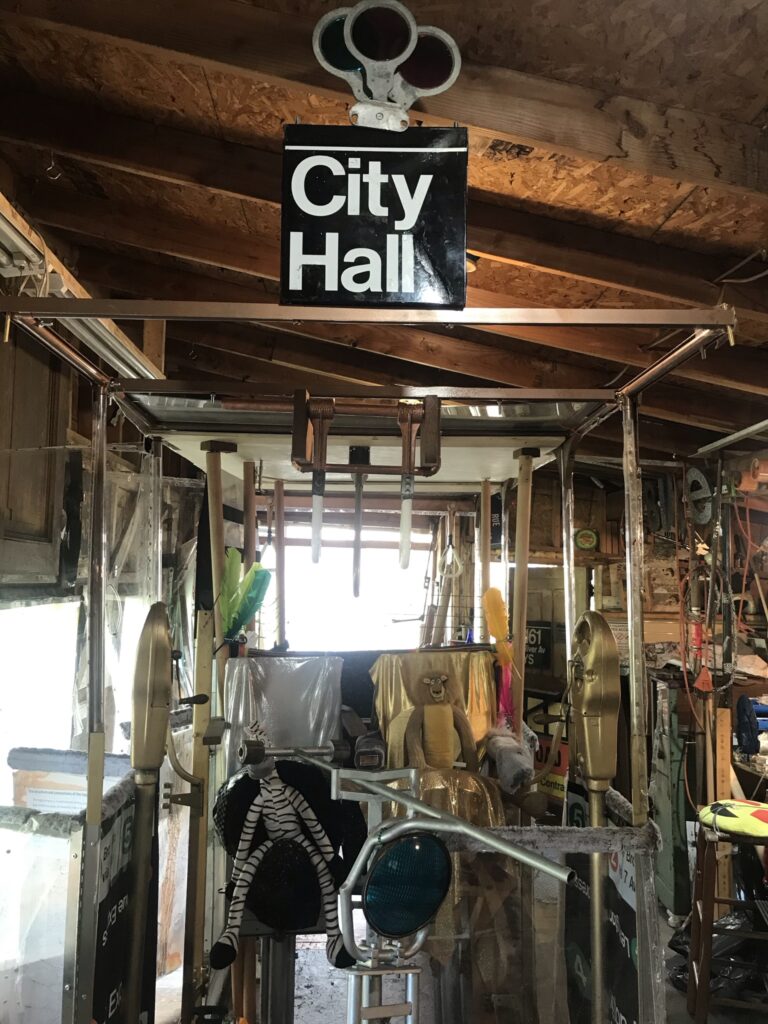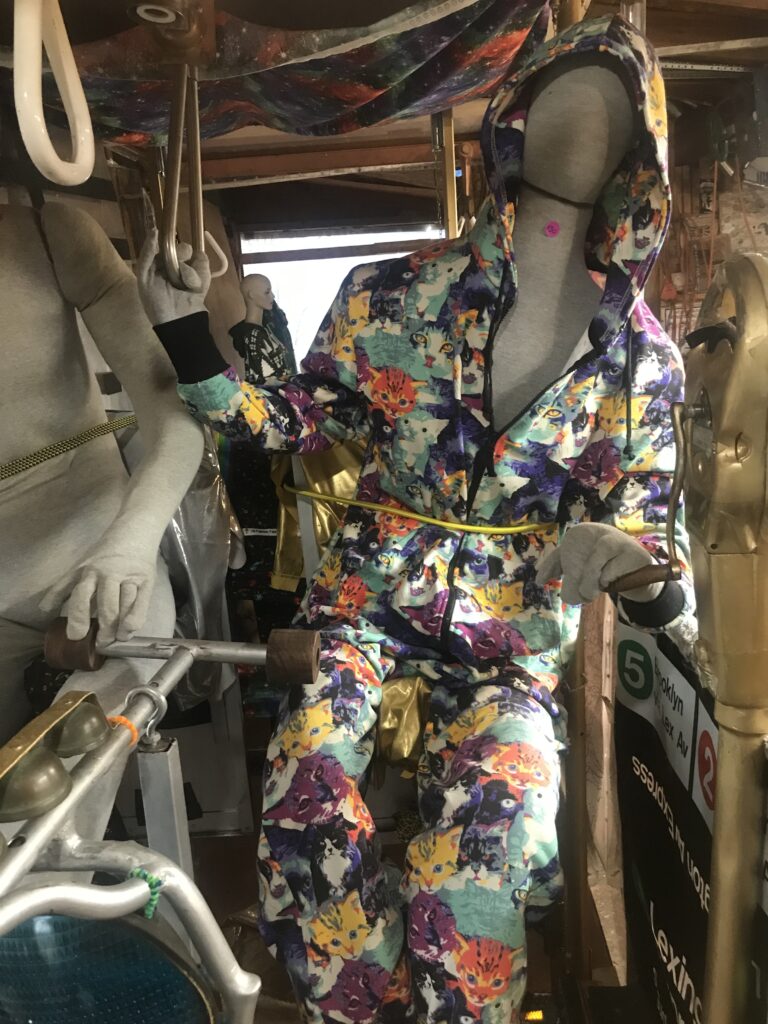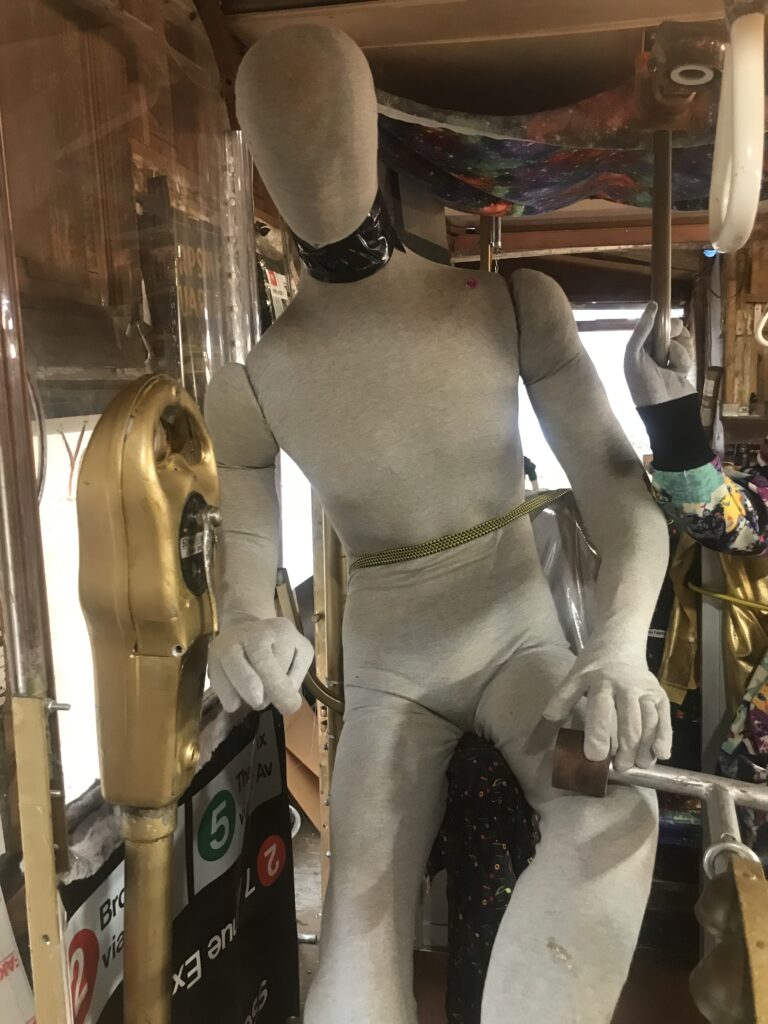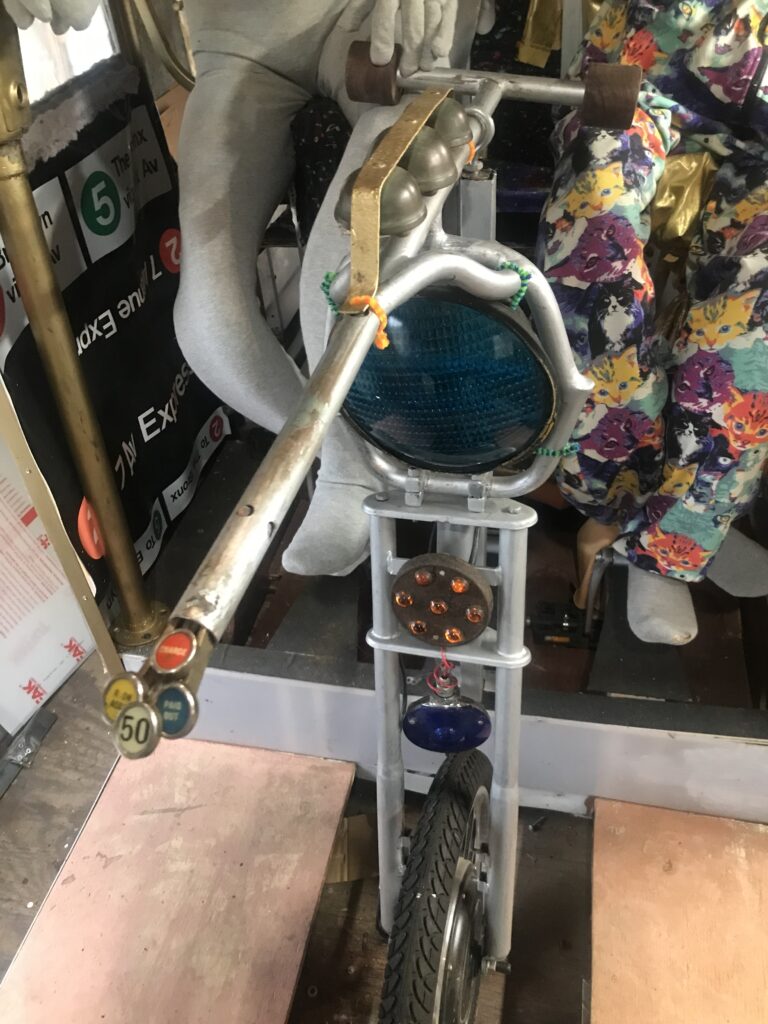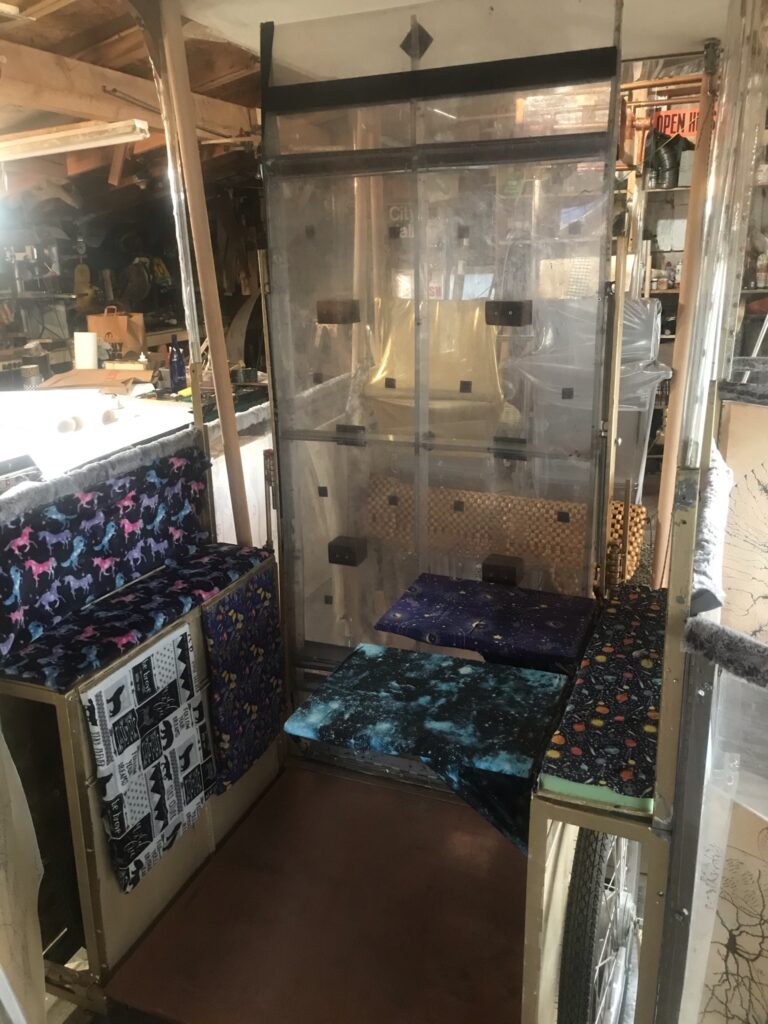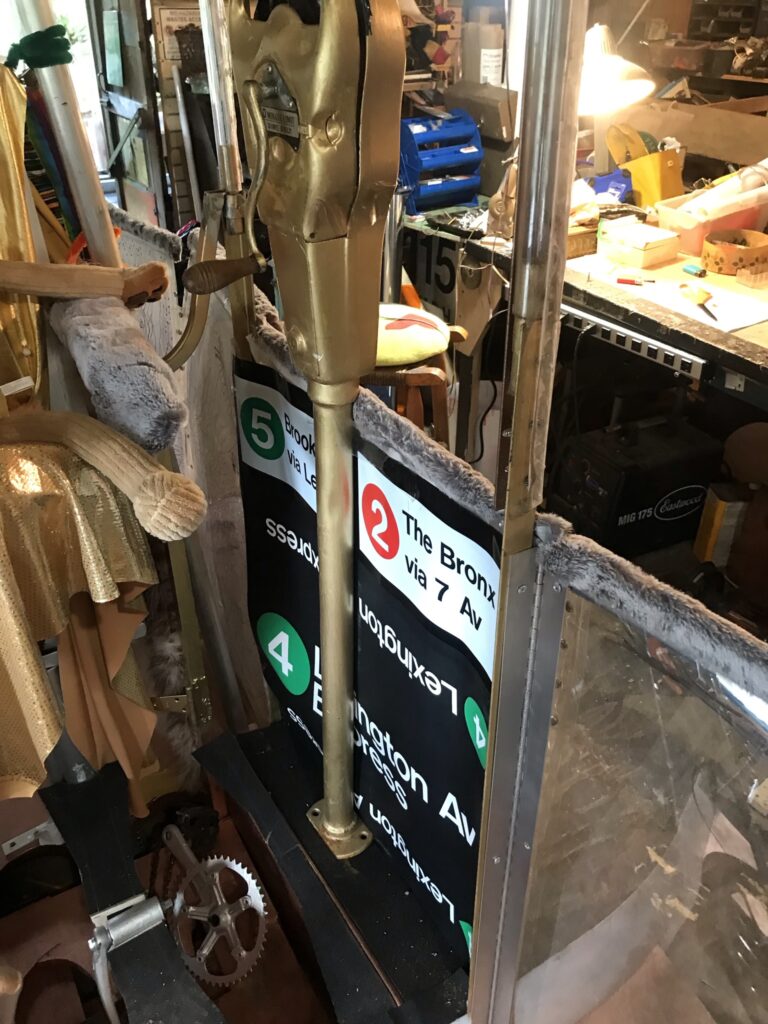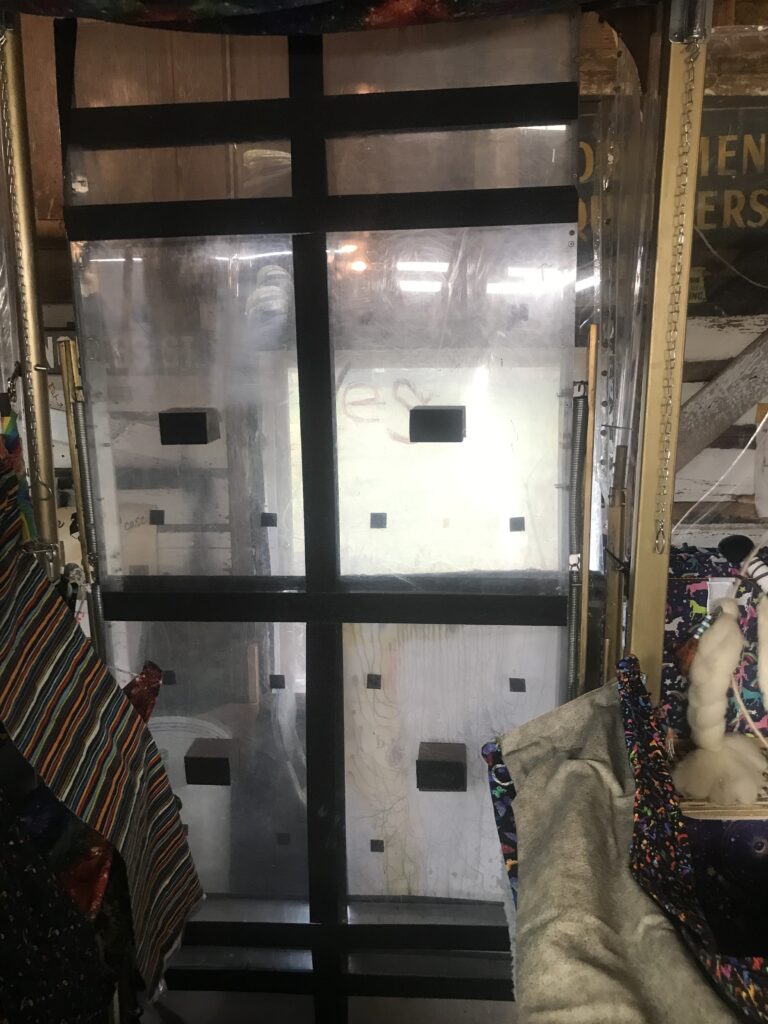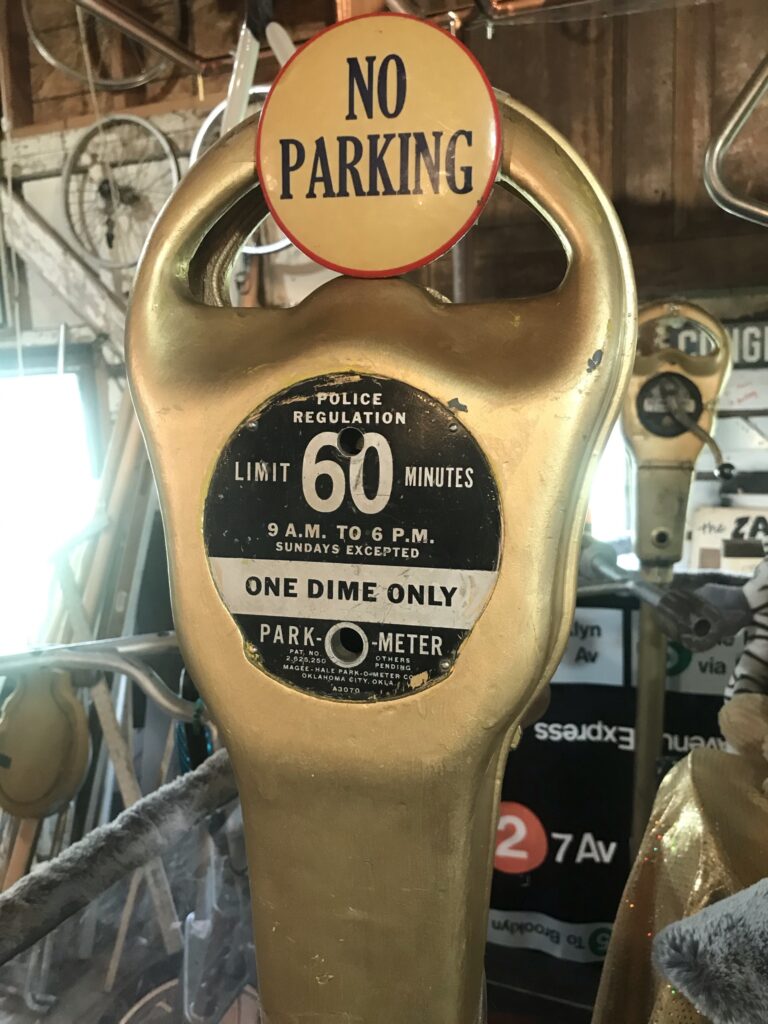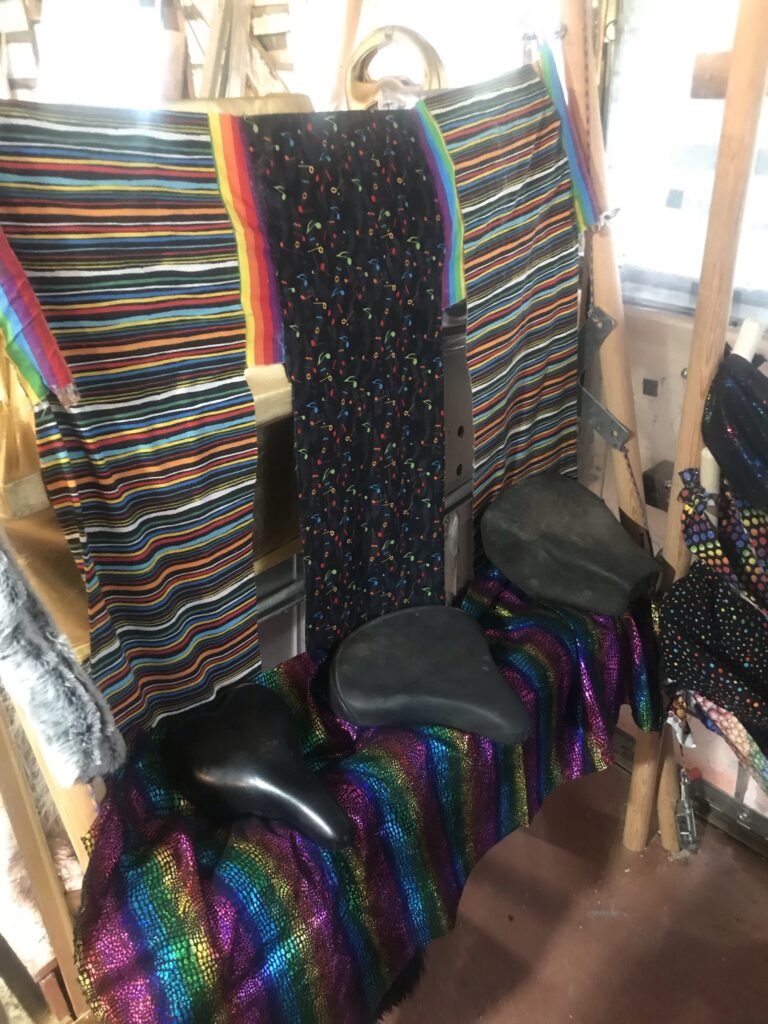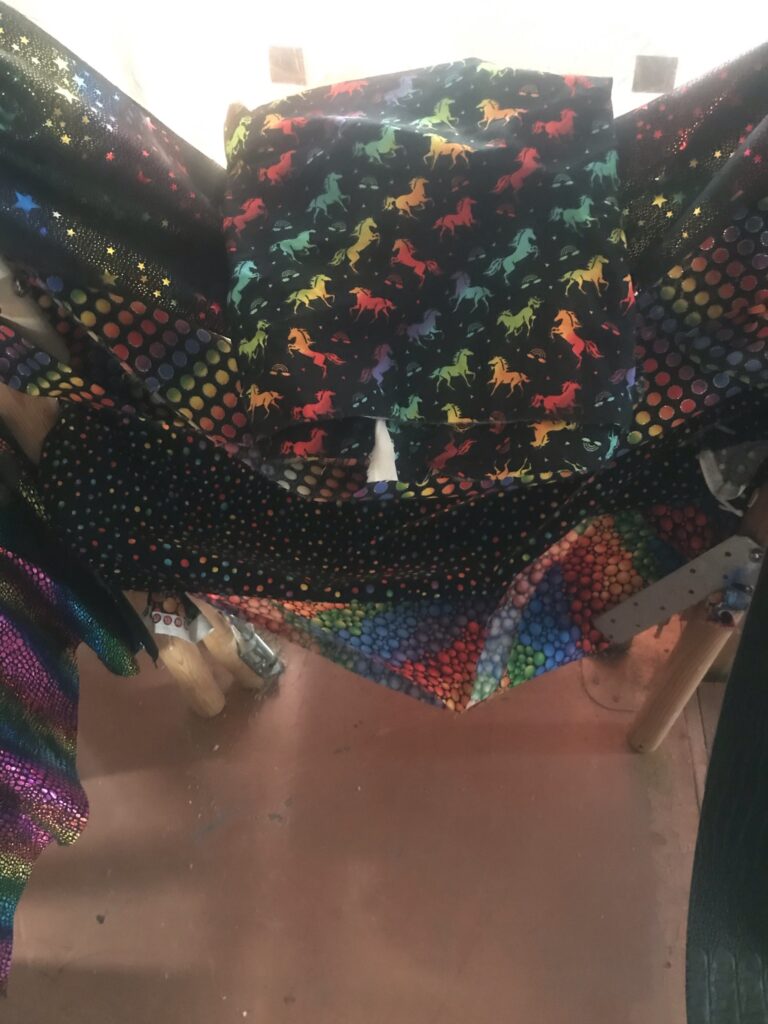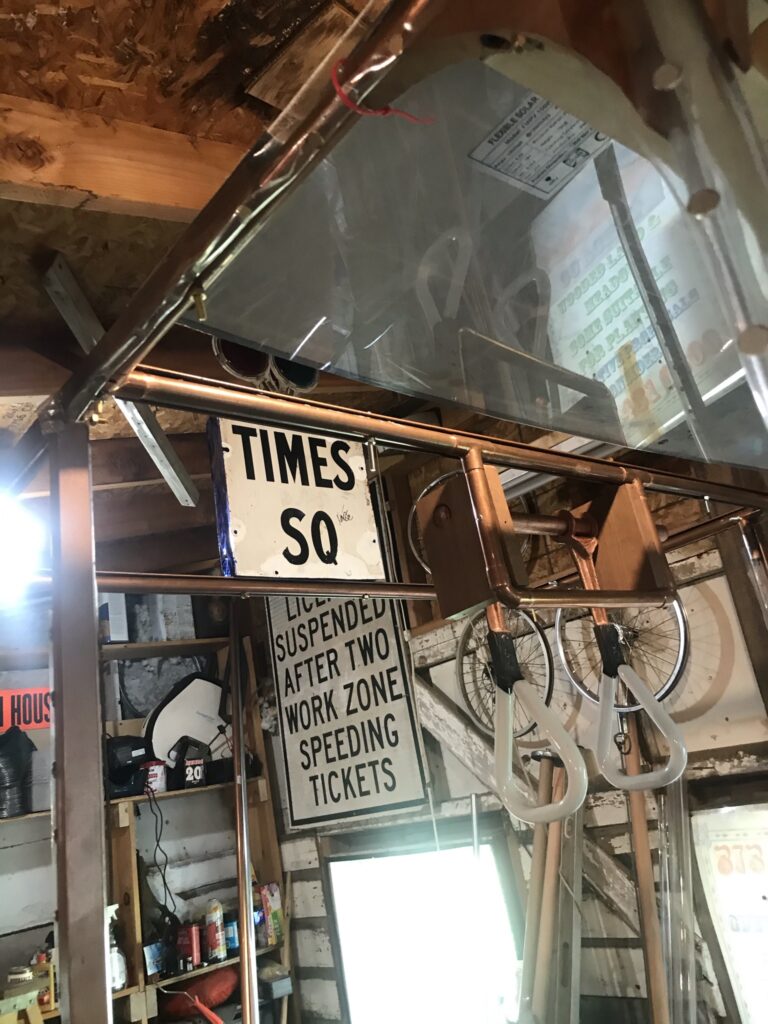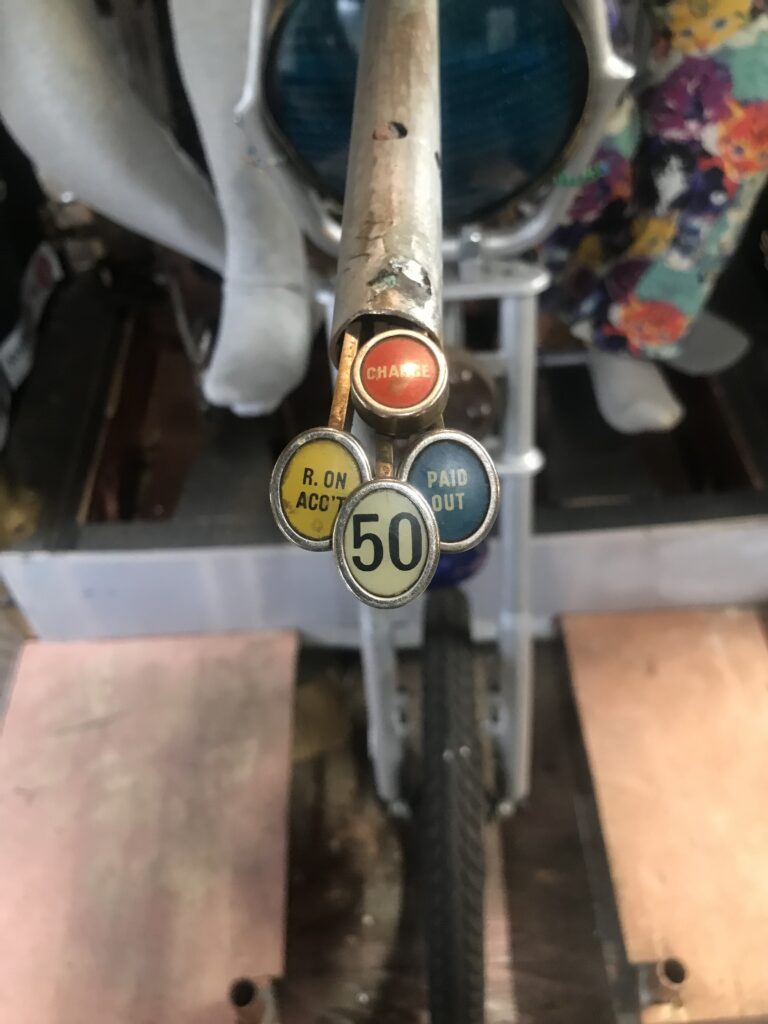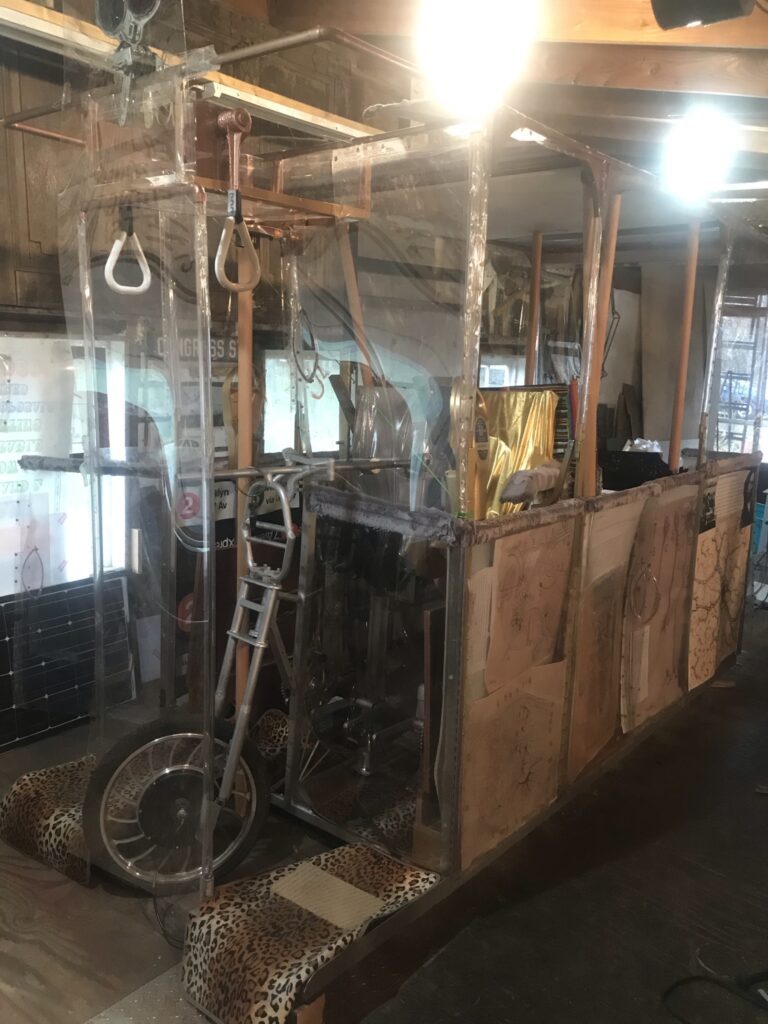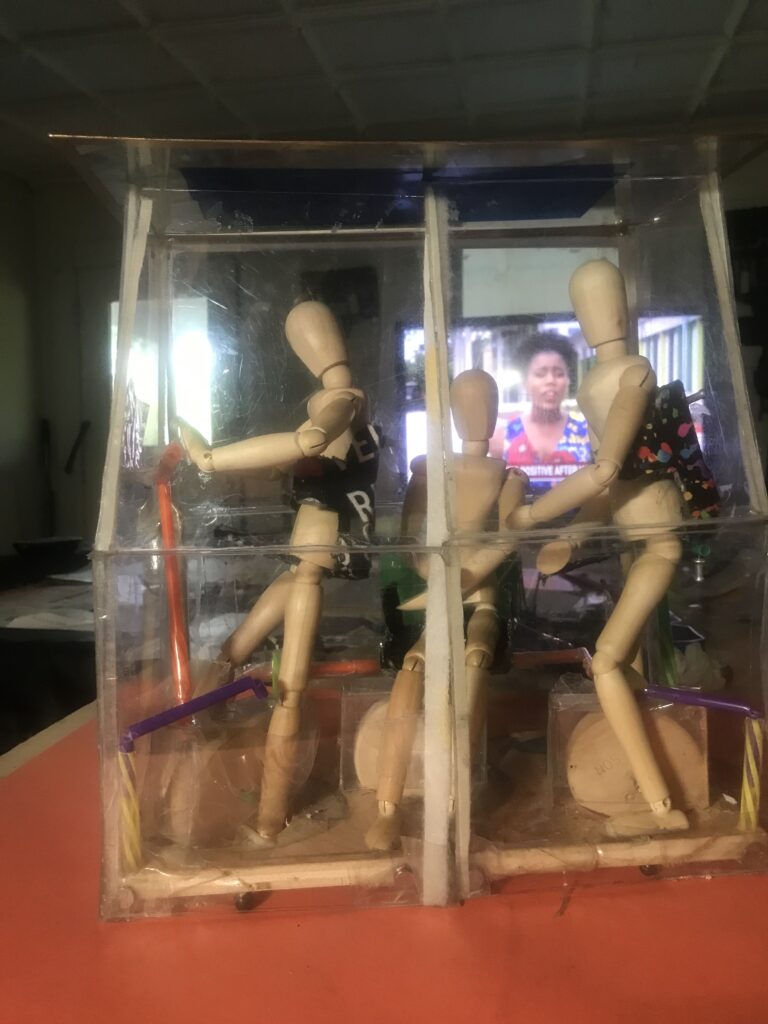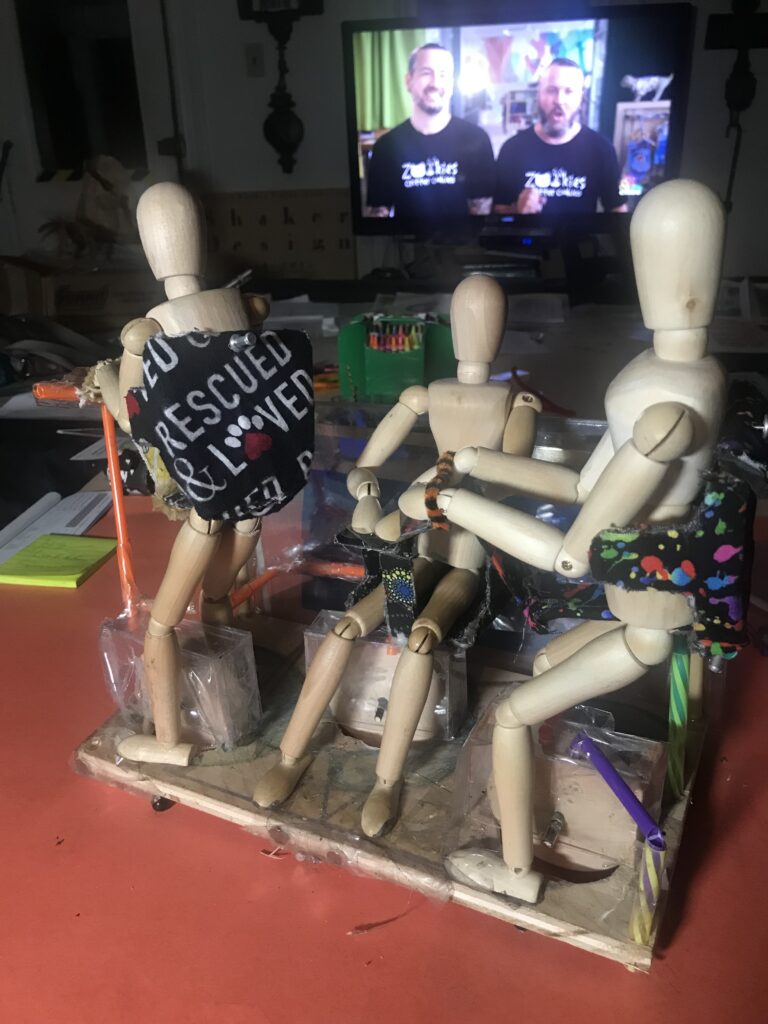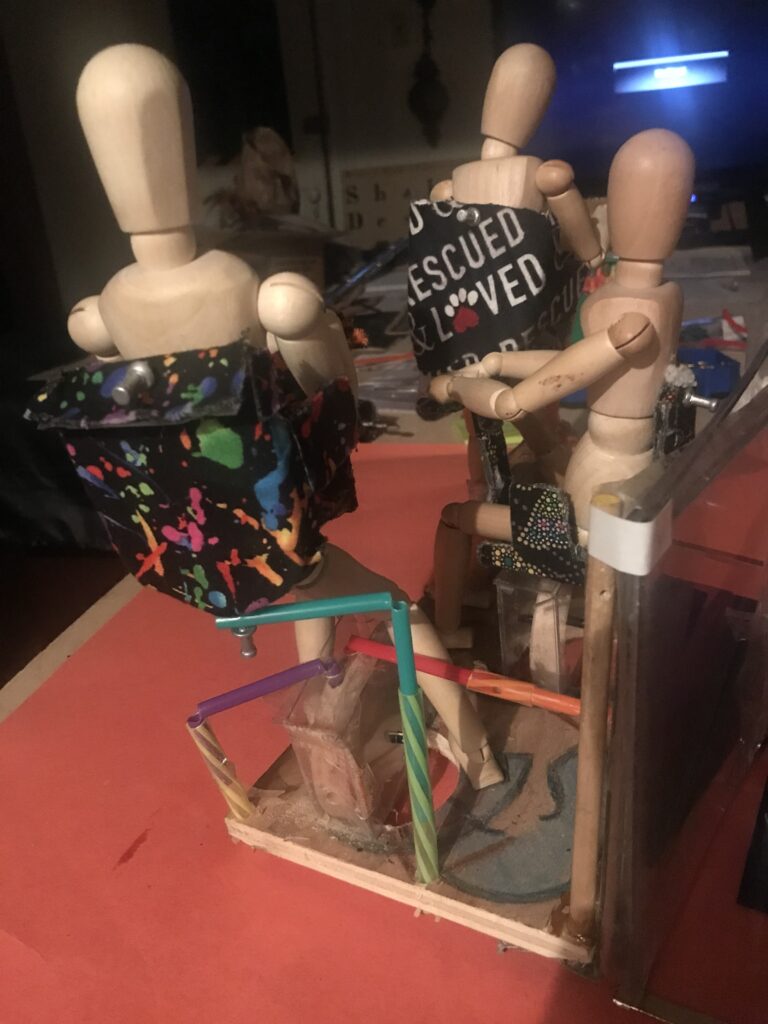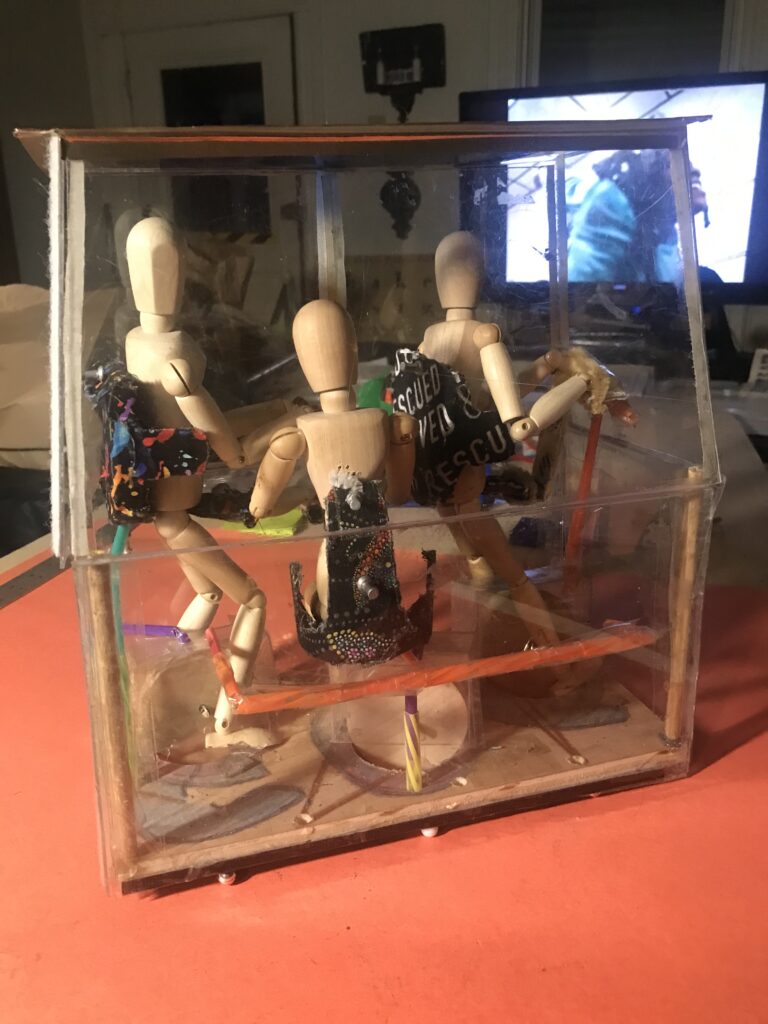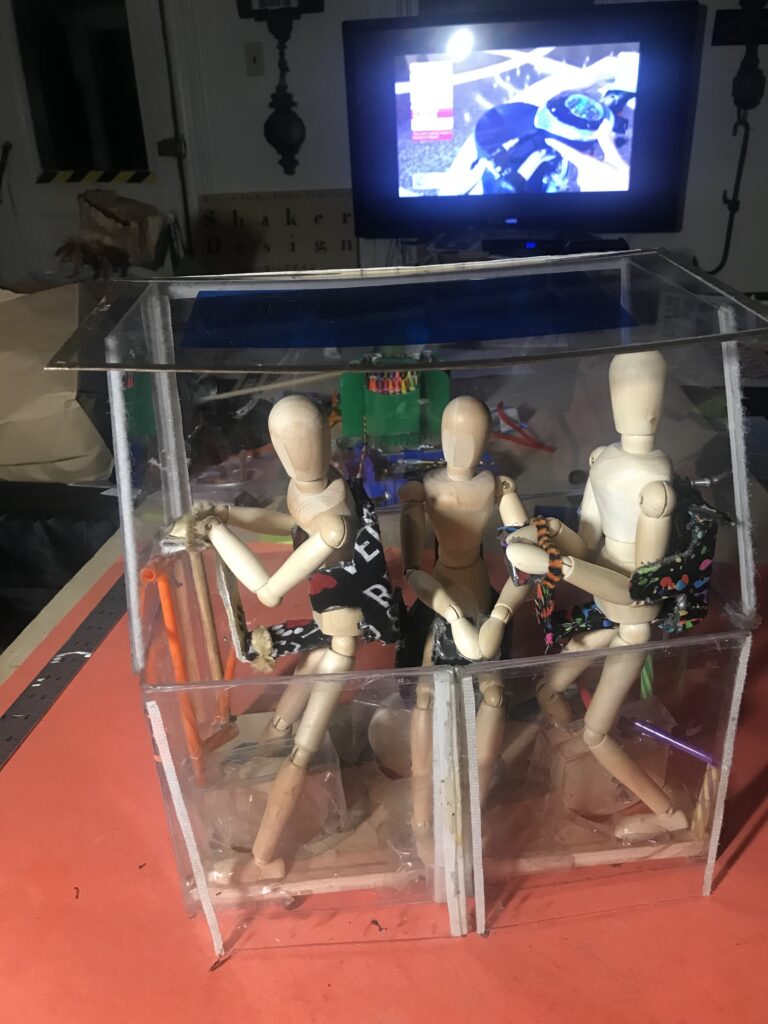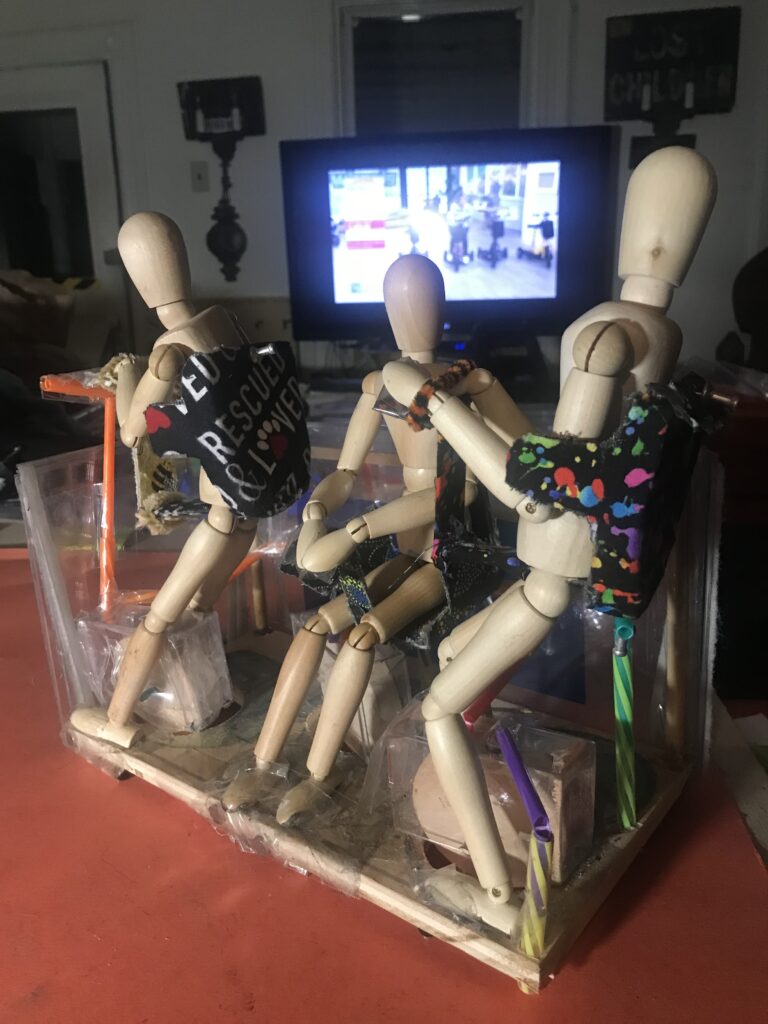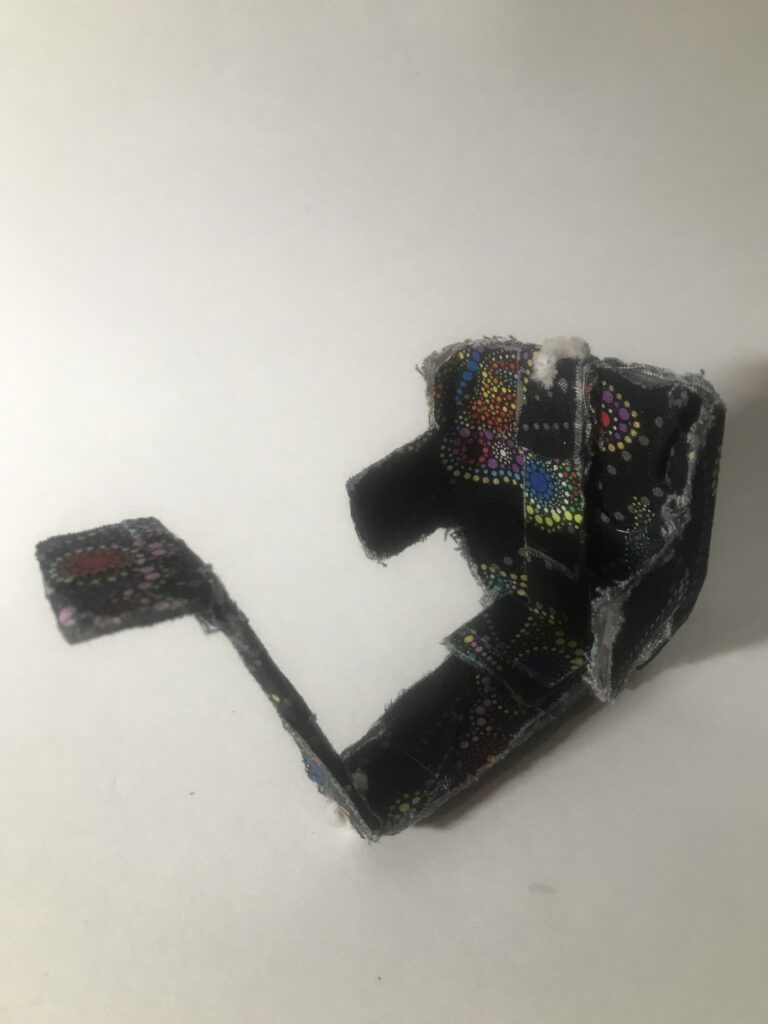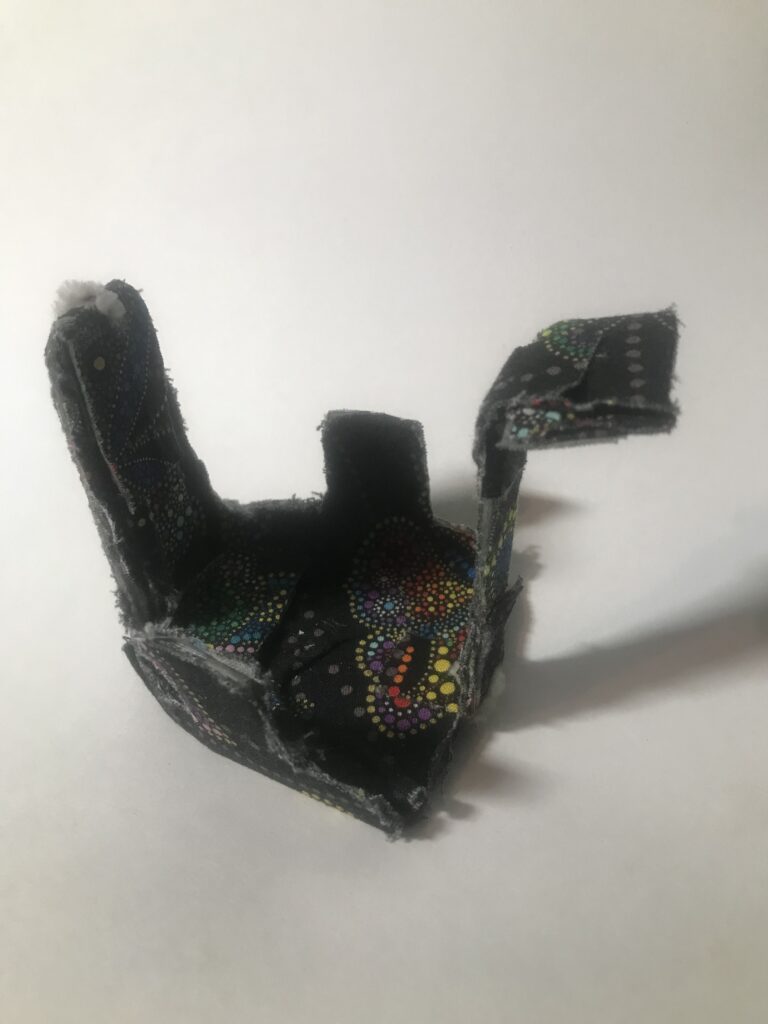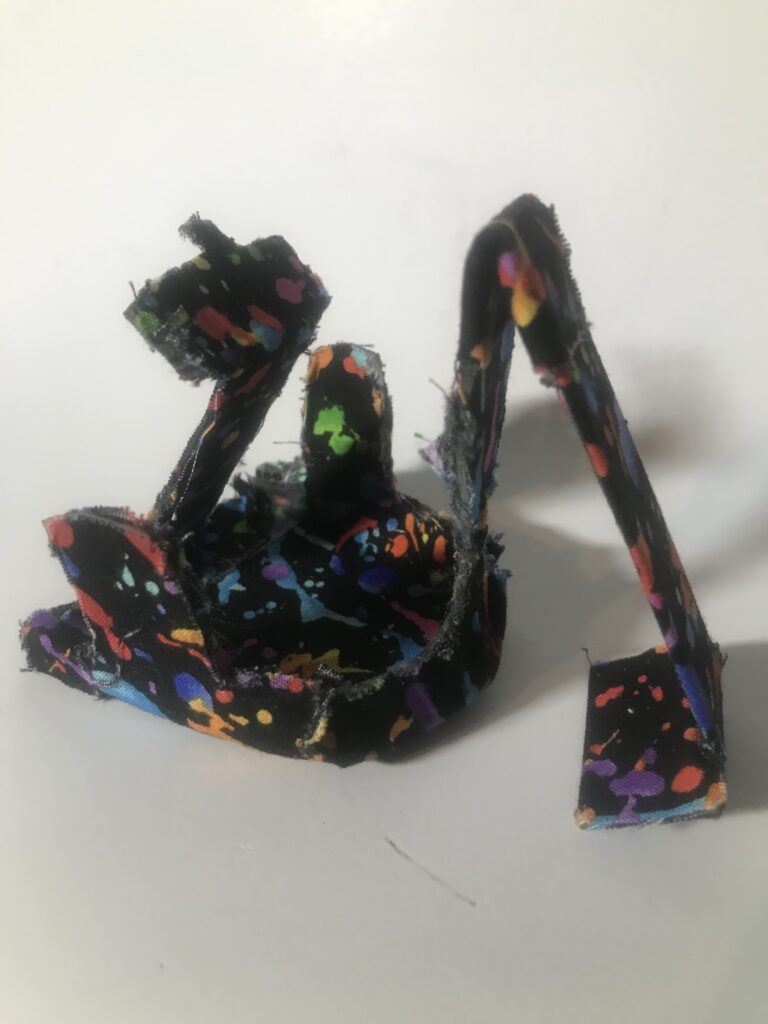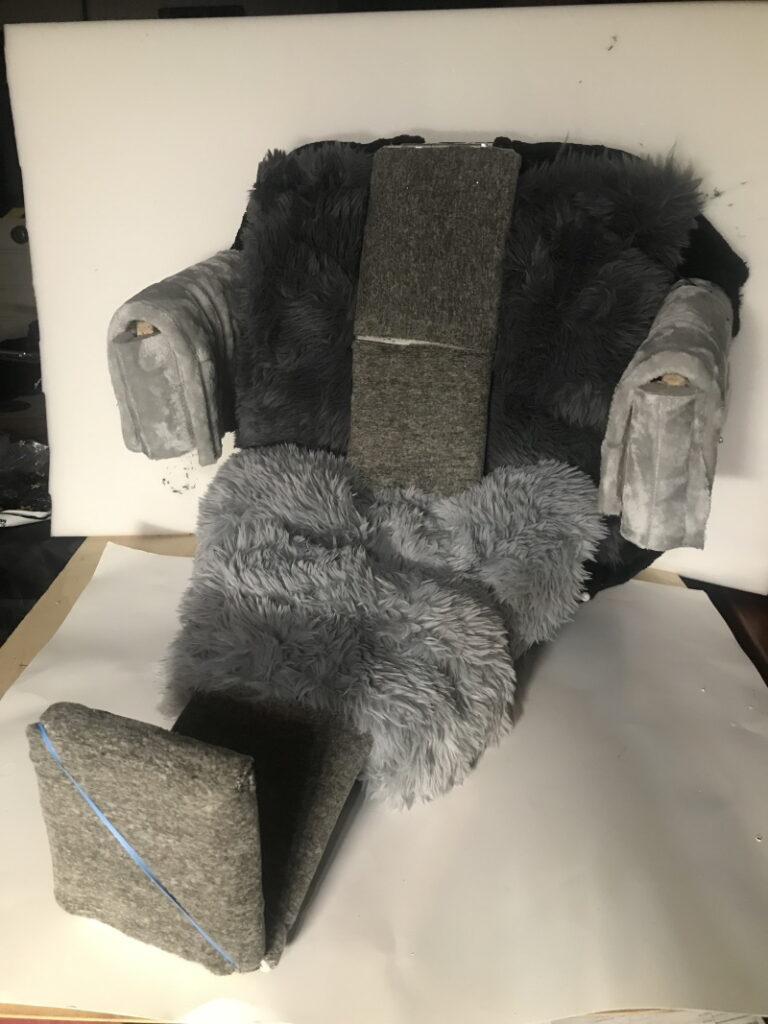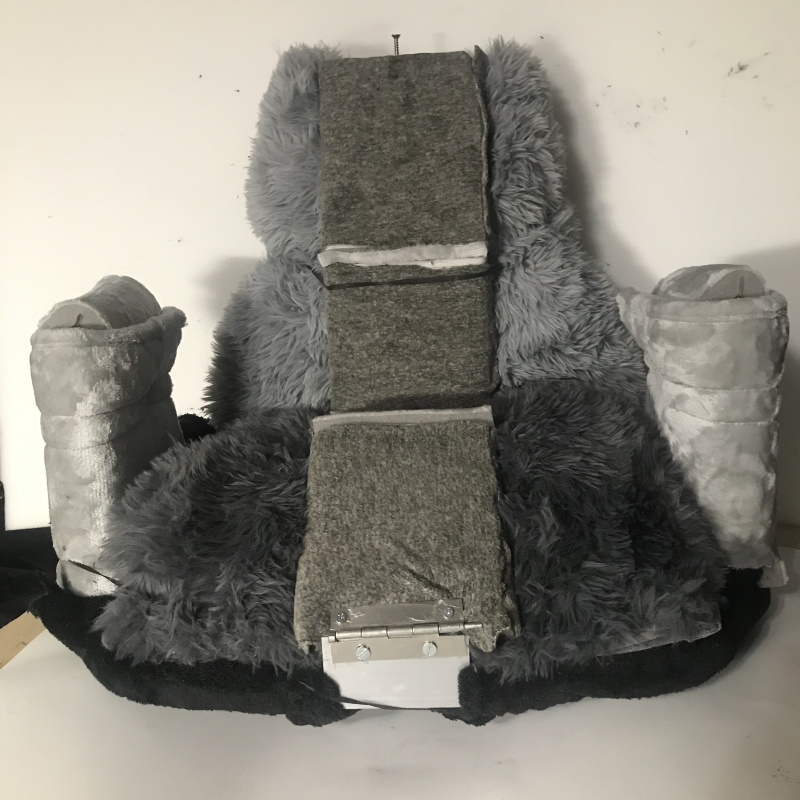This prototype vehicle
was constructed in order to demonstrate some of the ways in which “Pedicabs” can be re-configured, maybe even re-conceptualized, in order to make full use their potential. These same vehicles could be made fully accessible and, at the same time, provide an excellent new system for transporting wheelchairs. Attention to their siblings, cargo and delivery cycles, is expanding exponentially, with next hour/same day/next day service the rule now. It is time to think about this subject seriously, rather than dismissing it as a bit of strange overpriced, nostalgia
The CAT is:
Only 40” wide, (it might like to be 48” to better accommodate side-loading wheelchairs), The city permits pedicabs to be 55” wide
Seven feet long, with an additional 40” for the foldable extension, which can provide for a second wheelchair or cargo use
Seven feet tall, in order to enable a 6’+ tall person to stand inside comfortably and provide some space for ancillary equipment
Depending on weather, is surrounded by clear polycarbonate windows, that can be folded away when not in use.
In order to maximize capacity, conserve space and provide for different postures, standing/leaning is possible and safe with restraints
It is steered with a tiller, and pedals provide some power, as well as controlling the speed, which maxes out at 15 MPH.
The roof is covered with solar panels, that can produce up to a third of the energy needed to move the vehicle during the day
The underside of the vehicle contains spaces for a number of re-chargeable batteries which can be charged in place or changed out
There will be a variety of services offered, Wi-Fi, device charging, telephone connecting, some now, some later
Operators of vehicles need to be very familiar with their territory and can profit substantially by providing job, space, and other help
Ideally there can be regular routes for vehicles, with ties to all local merchants and cultural and educational resources
Can serve on-call customer rides, wheelchairs, neighborhood and many other tours, cargo and freight, group rides
Wheelchairs can load from either side, the sidewalk, or from the back with a movable ramp to serve all openings
There needs to be room for up to 8 passengers in such a conveyance because sometimes there is that much need to fulfill
It’s called the CAT, because felines are some of the most interesting, engaging, loving, ferocious and ubiquitous fellow mammals
Also beautiful, puzzling, graceful, proud, individual, soft, as hard to understand as they are to dismiss, not unlike us, planet-mates
Leaping and pouncing, curling up and stretching out, demanding and self-possessed, mysterious and totally predictable, like us











The Future of Pedalcabs
The cargo business has recently been revolutionized and the same is needed here. It will involve more than motors, dimensions and the number of wheels. In order for this profession to reach its potential to provide benefits to both its participants and the general public, the original stunted, politically-charged legal process that defined the field and set the conditions, must be started over. The importance of the climate crisis, the defeat of congestion pricing as a way to improve vehicle circulation, the advances in helpful technologies and the ever present need for healthy, dignified, profitable and beneficial forms of making a living, demand that this subject be treated seriously. It should not be about a nostalgia gimmick, with operators subjected to bad weather while their clients enjoy comfort and splendor, but rather an honest attempt to maximize the improvements to our public spaces that a real program could provide. Design competitions and robust community discussions must be part of this, along with whatever incentives, financial and otherwise, can be gathered and mobilized.
The negative aspects of the current situation must not be permitted to conceal the larger questions. Otherwise, there may be some improvement in the most negative elements of the picture, but no real structural change in the nature of this activity, its definition as a minor form of entertainment instead of a major form of transportation, an important spur to local community development, and a form of artistic expression. The potential to fuse private and public travel, wheelchair and elderly transport, educational and pleasure tours, cargo, delivery and other improvements in urban life, is well worth exploring. If all that is asked is to throw out the bums, that is all that will ever happen. Even if that were to be accomplished, which is far from a certainty, that will be a total waste of an important opportunity to do much more.
We could use the participation of academic institutions. Some different public schools and Universities need to be contacted and invited to be part of something. We have a lot of them here, especially New York based ones, all can be given a chance to participate in this. It is about engineering and art and urban space allocation, the environment and employment and entrepreneurial opportunities, tourism and disability transport. There are advocates in each area, nonprofits and famous pioneers in their respective fields. I believe that the seriousness of this effort will determine its efficacy and scope. Sure, demanding big, lit up license plates on current pedicabs and fair and enforceable regulation is a worthwhile goal, but it is also essential that the relevant co-factors in this urgent and important work be mobilized and encouraged to make their contributions to this task.
Ten Steps to Building a Local Transport Company, using creative, minimal, human/solar electric powered vehicles
After declaring yourself an Entity:
1. Use paper and internet postings to find free materials and local space
2. Collect some discarded or unused bikes, regardless of condition
3. Secure a place to put some material, like this, away
4. Put out a request for the use of a small workspace, 10’ x 10’ or greater
5. Go to local schools, artists and arts organizations, mechanics, designers, and fabricators, to publicize and seek involvement
6. Invite design ideas, on paper, for a variety of needed local transportation devices, for people, goods, and wheelchairs
7. Hold a conversation among all involved neighbors about which ideas are the most interesting and can be built
8. Build them
9. Put them into use and demonstrate their value to their users and the community at large
10. Start an enterprise based on the popularity, practicality, and obvious need for the devices that you have construed.

